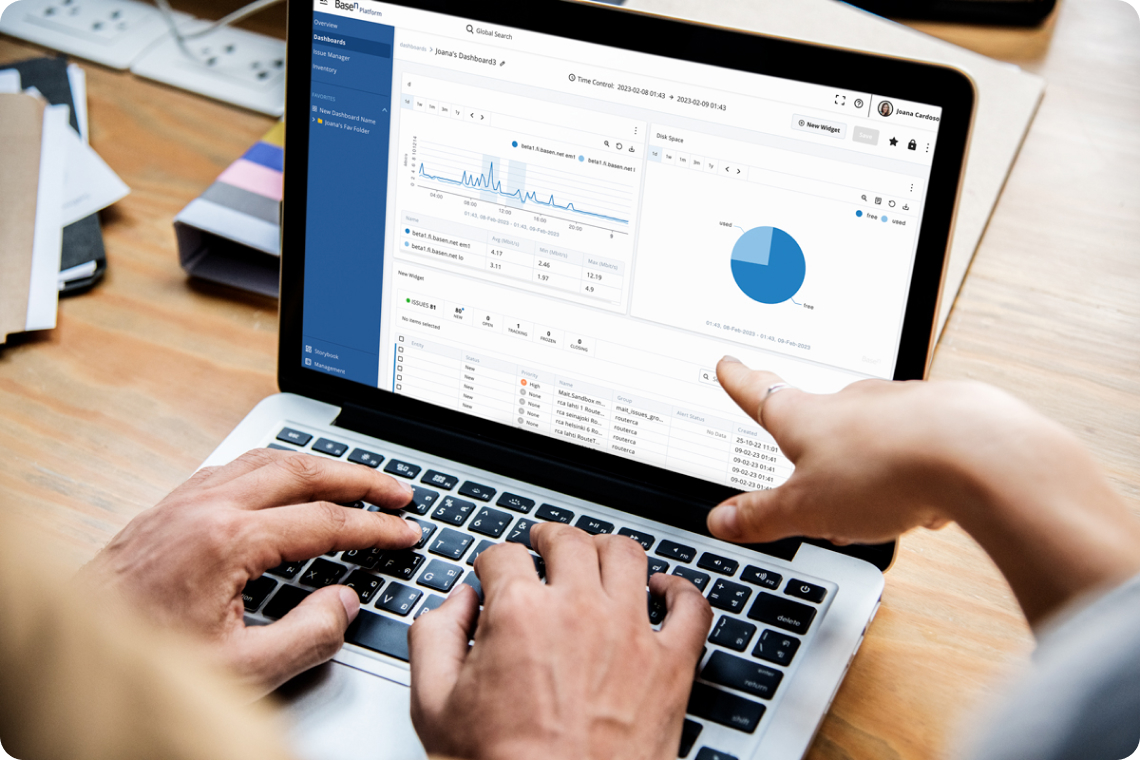In an era defined by rapid technological advancement, industries across the board are embracing innovative solutions to optimize operations, enhance user experiences, and drive growth. One such game-changing technology that’s making waves in the telecommunication industry is the concept of digital twins. While digital twins have long been associated with manufacturing and engineering sectors, their applicability to the telecommunication industry is proving to be a game-changer that enhances network operations, improves customer experiences, and paves the way for greater innovation.
Mission Critical Situational Awareness with Digital Twins in the Distributed Networks Sector
Real-time monitoring, predictive insights, proactive maintenance, resource optimization, scalability, and flexibility – these are the foundational pillars of mission-critical situational awareness in the Distributed Networks sector, where the telecommunication industry plays a pivotal role. BaseN Platform, a leading digital platform provider in IoT, Digital Twins, and situational awareness, empowers the industry with these capabilities and more.
Advancing Network Management and Maintenance
At its core, a digital twin is a virtual replica of a physical object, process, or system. In the context of the telecommunication industry, digital twins replicate the intricate architecture of the network infrastructure, complete with real-time data feeds, simulations, and predictive analytics. This technology enables operators to monitor, analyze, and optimize network operations in real-time, leading to a multitude of benefits.

For instance, a leading telecommunication company implemented digital twins to monitor their extensive network of cell towers. By creating virtual replicas of each tower and integrating real-time data from sensors, they were able to proactively identify and address issues such as signal strength fluctuations and equipment malfunctions. This resulted in improved network stability, reduced downtime, and enhanced user experiences.
Another illustrative instance involves a BaseN customer who engages our platform to enable a digital twin view of their complete network infrastructure. Through this implementation, they acquire a heightened level of situational awareness, granting them genuine insights into all facets of their network. Networks can be remarkably intricate, subject to the continuous introduction of new devices, the phased removal of older ones, the occurrence of faults, and even the impact of natural disasters. This dynamic environment demands comprehensive knowledge of ongoing occurrences. The incorporation of digital twin expertise, driven by our BaseN Platform, meets this necessity by delivering a clear and real-time understanding of the network’s entire landscape.
Enhancing Customer Experiences
In the Distributed Networks sector, which includes telecommunication, the focus extends beyond just network management. It’s also about delivering exceptional user experiences. Digital twins enable telecommunication companies to understand user behavior, analyze network usage patterns, and predict future demands. This wealth of information allows providers to tailor their services, optimize bandwidth allocation, and enhance customer satisfaction.
Consider a telecom giant that would leverage digital twins to analyze customer usage patterns and preferences. By doing so, they could dynamically allocate network resources based on peak usage times, ensuring uninterrupted service during high-demand periods. As a result, subscribers would experience seamless connectivity even during peak hours, leading to increased customer loyalty and positive reviews.

Future-Proofing Infrastructure
Additionally, as the telecommunication industry evolves, embracing technologies like 5G and the Internet of Things (IoT), the importance of network infrastructure becomes even more pronounced. Digital twins empower operators to simulate the impact of new technologies on their networks, allowing for strategic planning, efficient resource allocation, and seamless integration of emerging technologies. This ability to “test” changes in a virtual environment mitigates risks and ensures smooth transitions.
Operational Efficiency and Sustainability
Furthermore, telecommunication and networks are all about connectivity. Every component of the network contributes to overall efficiency and sustainability. Digital twins provide granular insights into each element, from cell towers to data centers. This visibility can drive operators to optimize energy consumption and promote eco-friendly practices.

Conclusion
In the Distributed Networks sector, the role of digital twins is transformative. These virtual replicas revolutionize network management, enhance customer experiences, and pave the way for innovation. By embracing digital twins, telecommunication companies can remain competitive in an ever-evolving landscape, providing seamless connectivity, advanced services, and exceptional user experiences. As technology continues to advance, the telecommunication industry as well as the Distributed Networks sector will undoubtedly harness the full potential of digital twins to lead the way into a connected future.




